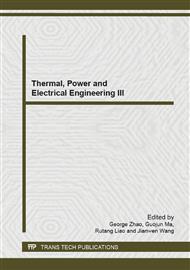p.989
p.995
p.1000
p.1006
p.1013
p.1017
p.1022
p.1029
p.1034
Accounting the Second Derivatives in the Power Flow Calculation
Abstract:
In this paper, it is show how the second derivatives of the Hessian matrix influence on the convergence of the power flow calculation. Convergence conditions of the Combined Newton’s method using 14 nodes IEEE testing schemes are investigated. The method can be used to determine the control actions to pull the operating point into the feasibility domain.
Info:
Periodical:
Pages:
1013-1016
Citation:
Online since:
June 2014
Authors:
Price:
Сopyright:
© 2014 Trans Tech Publications Ltd. All Rights Reserved
Share:
Citation:


